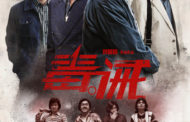 Back in 2004, writer-director-actor Shane Carruth shocked the cinema world with his nano-budgeted debut feature Primer at the Sundance Film Festival. A mind-bending and dramatic examination of time travel, the film took home the Grand Jury Prize and gave Carruth an avid, cult following. Now, nearly a decade later, the auteur returns with only his second movie Upstream Color, which is already weighted with anxious anticipation from critics and fans alike.
Back in 2004, writer-director-actor Shane Carruth shocked the cinema world with his nano-budgeted debut feature Primer at the Sundance Film Festival. A mind-bending and dramatic examination of time travel, the film took home the Grand Jury Prize and gave Carruth an avid, cult following. Now, nearly a decade later, the auteur returns with only his second movie Upstream Color, which is already weighted with anxious anticipation from critics and fans alike.
Upstream Color opens with a nightmarish anecdote in which Kris (Amy Seimetz) is drugged with a bizarre natural compound that gives a petty thief complete control over her and her actions. After a series of uncomfortable tests and manipulations, the thief uses Kris as a means to rob her blind with her own hand. Her life in near ruin, Kris is suddenly and severely attracted to a man named Jeff (Carruth) whom she meets repeatedly on the train to work each morning. The two are instantly and utterly drawn to one another in a way that only fate (or this chemical manifestation of the concept) can accurately explain. A whirlwind romance, a marriage, and a happy, but disjointed life pass in mere minutes for the inexplicably entwined couple. While all of this occurs, a man identified only as The Sampler (Andrew Sensenig) seems to be tracking Kris and Jeff’s lives, along with those of several other people, by injecting pigs with the linking chemical at his farm. From that point on, Kris and Jeff must decide whether to risk their relationship and discover the meaning behind their bond and all bonds across humanity and nature.
If that last sentence sounds overly pretentious and vague, I apologize but it’s really the general concept behind this operatic collision of sounds and images Carruth uses to tell this story of nature, man, and connections across worlds. It’s hard to tell what scenes are in chronological order, which are dream (or nightmare) sequences, and which are just Carruth meandering down some psychedelic fantasy pathway with no real intent or purpose. The visions on screen collapse and collide with little to no explanation through the majority of the film. There are people and pigs, flowers, the release of a bluish chemical from some groundworms, and all of these form some sort of cinematic collage against which Carruth wants us to paint our own picture. It’s a bold decision on the filmmaker’s part and an extremely divisive one if the audience I saw it with can be used as a metric.
The acting is on par with what you can expect from such a low-budget indie feature. It’s serviceable, particularly in the wordless, imagery-loaded third act that depends on emotionality and expression to wrap up the tale. But there’s no grand display of character to knock you off of your feet. Dialogue is forced and sloppy, but it’s also not the focus of the movie. On the other hand, Shan e Carruth’s work behind the camera is far more remarkable. He seems to have hand-picked shot compositions and scenes that resonate with the viewer, even if the viewer can’t understand what he’s associating with. The editing is lightning quick and jarring in nearly every scene. Were it not for careful attention to the order of images and brilliant, but heavily leaned upon usage of sound and music, one might confuse Upstream Color for an artsy, senior year student film. And that’s not necessarily a detriment, especially in Carruth’s hands. This is the nexus of experimental, experiential, and conventional filmmaking in that it’s certainly watchable in a theater but is far from easily digestible cinema.
e Carruth’s work behind the camera is far more remarkable. He seems to have hand-picked shot compositions and scenes that resonate with the viewer, even if the viewer can’t understand what he’s associating with. The editing is lightning quick and jarring in nearly every scene. Were it not for careful attention to the order of images and brilliant, but heavily leaned upon usage of sound and music, one might confuse Upstream Color for an artsy, senior year student film. And that’s not necessarily a detriment, especially in Carruth’s hands. This is the nexus of experimental, experiential, and conventional filmmaking in that it’s certainly watchable in a theater but is far from easily digestible cinema.
Make no mistake — this film will leave you happy or upset, ecstatic or angry, asking the wrong questions and answering the right ones, but only sometimes. You’ll extract a different meaning from the film than every other audience member because it feels somewhat personalized. And yet, you’ll have the same experience as everyone because it feels somewhat impersonal and invasive. Upstream Color is less like a standard movie than it is some kind of essay on culture and human interaction. It’s both grand in scale and minute in perspective. It’s pretty and disarming. I’m running out of diction in this review, but it’s an interesting experience that will have just as many people leaving the theater after ten minutes of runtime as people having delighted conversations afterward. If you can handle some fascinating visuals and audio work with a baffling narrative thread and some possibly narcissistic filmmaking, there’s a chance you’ll get something meaningful out of Upstream Color. Otherwise, if you need a solid, well-defined story and real writing, you may want to avoid this one. And although I am almost always in the latter camp — that is, a staunch advocate of good writing — I actually didn’t mind this cinematic blur as much as I thought I would and thinking about it days after the screening helped quite a bit.
Rating: This overly complex and meandering experimental feature has gorgeous audiovisual work but will turn away all except the most curious and open-minded audiences, who may end up enjoying the vast possibilities and conclusions the film entertains. (6/10)















Recent Comments